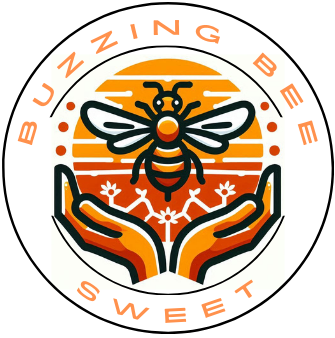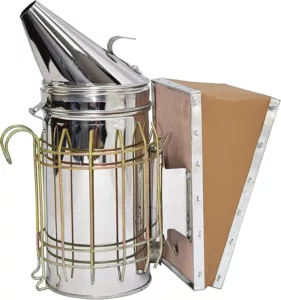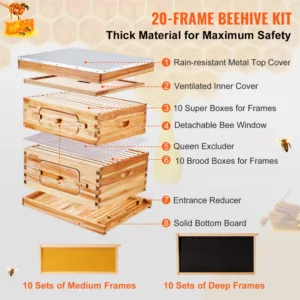Diving into beekeeping without the right gear is like trying to cook without any utensils. Proper equipment isn’t just for show; it forms the backbone of your new beekeeping venture. Imagine trying to handle bees with no protection. Yeah, not a good idea. Using the right gear keeps you safe and makes the whole experience way more enjoyable.
Safety is the number one reason to invest in good beekeeping gear. Bees can get a bit feisty, especially when you’re poking around their home. Wearing a full suit, gloves, and veil is your first line of defense against stings. Plus, staying calm and collected in protective gear helps the bees stay calmer too. It’s a win-win for everybody involved.
Then there’s the efficiency factor. Quality tools streamline your beekeeping tasks. Think of smokers, hive tools, and bee brushes as extensions of your hands. They help you manage the hive without causing unnecessary stress to the bees. For example, a smoker helps calm the bees, making it easier to inspect the hive and harvest honey without a lot of chaos. Hive tools are essential for prying apart the frames where the bees live, especially since propolis (a sticky substance bees use to seal small gaps) glues everything together.
Budgeting for beekeeping equipment can be a bit daunting, but it’s important to think of these items as investments. Cheap gear might save you money upfront, but it often wears out quickly or doesn’t provide adequate protection. Spend wisely on quality equipment to save yourself headaches (and bee stings) in the long run. You can also go for a complete start kit including all the essentials.
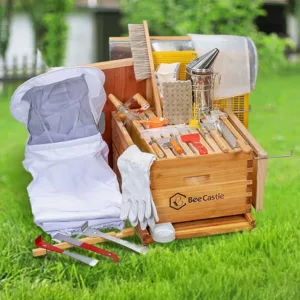
 Lastly, having the right gear just makes things more fun. When you’re not stressing about getting stung or fumbling with subpar tools, you can focus on the exciting stuff, like watching your bees thrive and harvesting your first batch of honey. Investing in good gear sets you up for success and makes beekeeping a truly rewarding hobby.
Lastly, having the right gear just makes things more fun. When you’re not stressing about getting stung or fumbling with subpar tools, you can focus on the exciting stuff, like watching your bees thrive and harvesting your first batch of honey. Investing in good gear sets you up for success and makes beekeeping a truly rewarding hobby.
Fundamental Protective Gear Every Beginner Beekeeper Needs
Suiting up for beekeeping is non-negotiable. A quality beekeeping suit acts like your armor. Made of thick cotton or a poly-cotton blend, these suits are designed to keep those pesky stingers away from your skin. When shopping, look for ones with elastic bands at the wrists and ankles to prevent any sneaky bees from getting inside. Proper ventilation is also key to keep you cool while working hard out in the sun.
Gloves are just as important as the suit. Leather or rubber gloves are the go-to choices, each with their own pros and cons. Leather provides great protection but can be a bit stiff, reducing dexterity. Rubber, on the other hand, offers better flexibility but slightly less protection. Choose based on what feels comfortable and secure to you.
You can’t overlook the importance of a bee veil and hat. This combo keeps your face and neck safe—areas you really don’t want to mess around with when it comes to stings. Go for veils with a wide brim so you’ve got good visibility and plenty of space between your face and the mesh. Make sure it’s easy to secure to your suit or jacket to prevent any gaps.
Don’t forget about your feet. Sturdy boots are crucial since bees generally like nesting at ground level. Bees are more likely to be around your feet than you’d think, so closed-toe shoes, preferably boots, are essential. Some suits come with leg straps you can tie around the tops of your boots for added security. Nobody wants an angry bee stuck in their shoe.
Maintaining your protective gear ensures it lasts longer and stays effective. After each use, wash your suit and gloves to remove any bee-related smells that might attract unwanted attention. Air-drying is best, as high heat can degrade the materials. Regular inspections for tears or holes are a good habit to get into, so you can repair any weak spots before they become big problems.
https://buzzingbeesweets.com/the-importance-of-protective-gear-in-beekeeping/
Essential Tools for Hive Management and Maintenance
Grasping the basics of hive management starts with knowing your tools.
- The hive itself is a complex structure, home to thousands of bees working around the clock. Understanding the components of this little ecosystem—frames, hive bodies, and supers—helps you navigate your responsibilities more effectively.
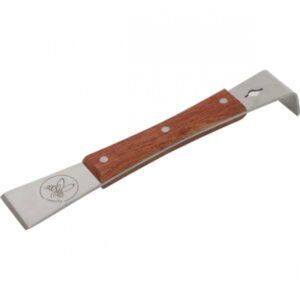
- The hive tool is your best friend. Picture a mini crowbar; it pries apart frames and scrapes away propolis. This multi-tasker helps you maneuver with ease, reducing the risk of harming your bees while you’re at it. Choose one that feels sturdy and comfortable to grip for best results.
- Smokers might look old-school, but they are vital. When used correctly, a smoker calms the bees, making inspecting the hive smoother. The smoke disrupts the bees’ alarm pheromones, so they stay calm. Learn to keep your smoker lit efficiently because it can be a game-changer during hive checks.
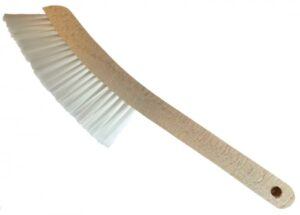
- Bee brushes are a gentle way to move the bees without causing them stress. Made with soft bristles, these brushes help you clear bees off frames when you need to inspect or remove parts of the hive. It’s crucial to brush delicately to avoid injuring the bees.
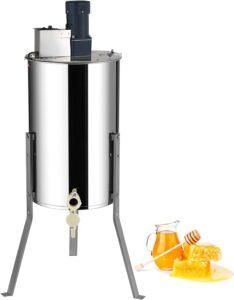
- Harvesting honey is the sweet reward of beekeeping, but it also requires the right tools. Extractors spin the honey out of the frames, while uncapping knives or forks help remove the wax capping that seals the honey in the comb. Manual or motorized, choose an extractor that fits the scale of your operation and your budget.
Each tool you use serves a specific purpose, making your interactions with the hive smoother and more efficient. Whether you’re prying apart frames, soothing the bees with smoke, or carefully moving them with a brush, having the right gear streamlines your tasks and keeps your bees happier and healthier.
Beginners’ Guide to Setting Up Your First Beehive
Selecting the perfect spot for your beehive sets the stage for success. Opt for a sunny location with some natural wind protection. Bees adore the sun, and it helps keep their hive dry. Make sure there’s enough space around the hive for easy access when you’re doing inspections or gathering honey.
Assembling your beehive may seem daunting, but it’s manageable with a step-by-step approach. Start with a solid base, followed by the hive stand. Then, add brood boxes and supers, the wooden boxes where bees build their combs and store honey. Don’t forget the inner cover and outer cover to protect the hive from the elements. Kits are available that simplify the process, offering all the components you need in one package.
Choosing the type of hive is another big decision. The Langstroth hive, known for its modular design, is the most popular among beginners. Each box can be independently accessed and swapped out. The Top Bar hive, with its horizontal structure, offers a more natural approach but requires more hands-on management. Research and see what aligns best with your goals and management style.
Installing your first colony is where the fun truly begins. You can purchase bees in packages or nucs (small, established colonies). Carefully transfer the bees into their new home, making sure the queen is safely introduced. Feeding the bees sugar water initially helps them settle and start building their new hive.
Regular maintenance is crucial for a thriving hive. Inspect the hive every couple of weeks to check for signs of disease, assess honey production, and ensure the queen is healthy. Look for anything unusual, like changes in bee behavior or hive odors, and act quickly if something seems off.
There’s always more to learn in beekeeping. Joining local beekeeping clubs, reading books, and following online forums can provide ongoing education and support. The beekeeping community is extensive and always ready to help newcomers find their footing.
 Design & Build an Online Business That You Love.
Design & Build an Online Business That You Love.
This post may contain affiliate links.
